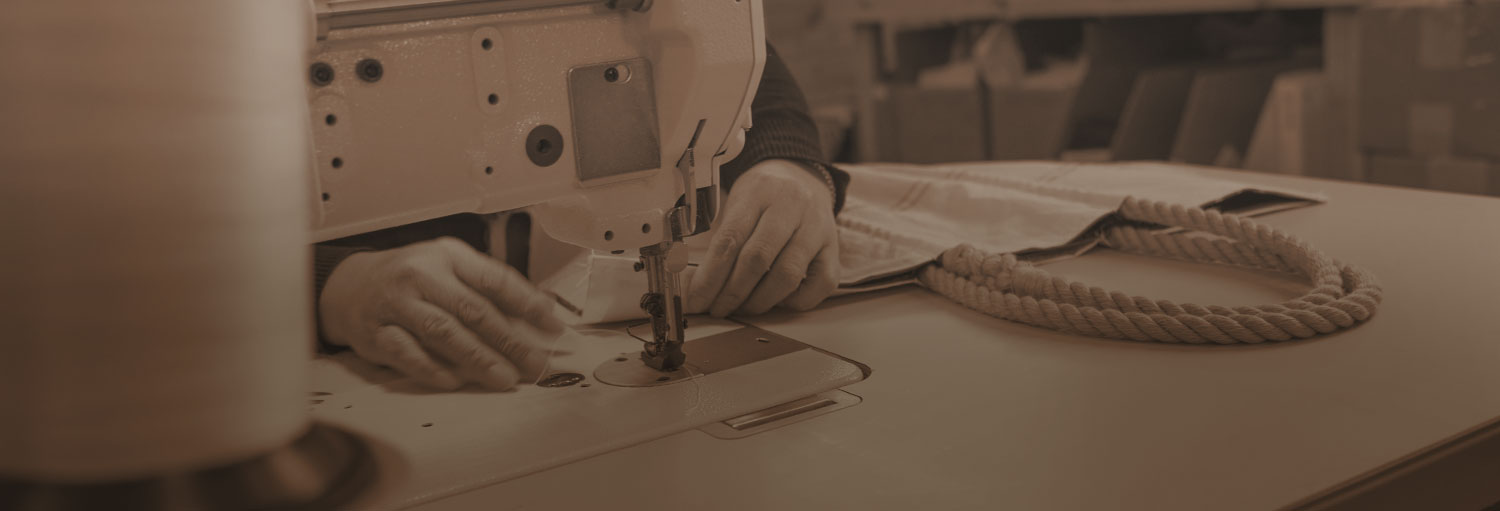
Sustainability at theHEART OF OUR CRAFT
Have you ever thought about what it takes to prevent more than 1.5 million pounds of sails from ending up in landfills? Since 1999, we've been transforming retired sails into handmade totes, backpacks, crossbody bags, and more. While it's second nature to us, it's a meticulous process that requires dedication and expertise.
From sourcing and cleaning sails to cutting and stitching them into our iconic bags, each sail passes through the hands of at least 10 skilled artisans. Join us as we take a closer look at our commitment to sustainability and the journey of every sail we repurpose.
The Sea Bags Process: From Sail to Tote
We caught up with our Operations Manager, Dillon Leary, to walk us through what happens from the moment a sail arrives at our facility to when it is reborn as a Sea Bag.

"Each sail is unique in terms of size, weight, and fabric type. Some are thick and heavy, designed for large cruising boats, while others are lighter and more flexible, suited for racing vessels."
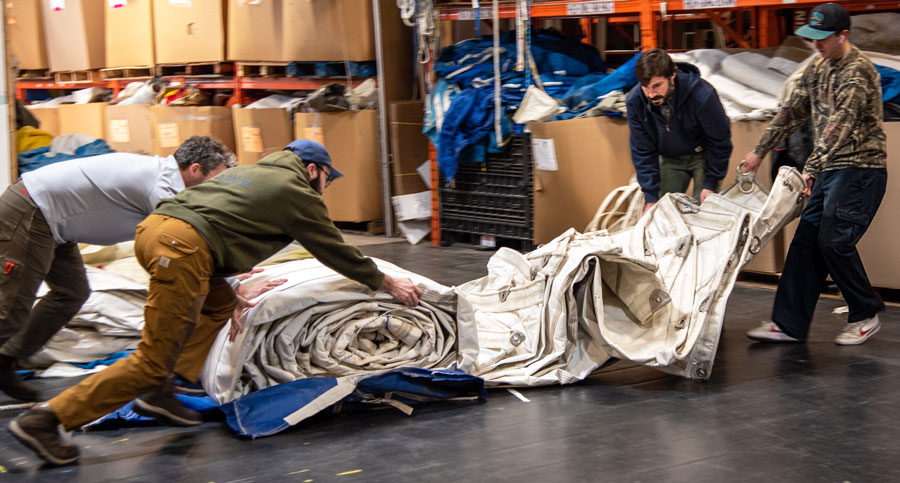
Maximizing Every Inch of Recycled Sail Cloth
When we say we strive to use every possible piece of recycled sail cloth, we mean it.
Before we begin cutting, we first remove any reusable hardware, ropes, and battens. Weathered metal hardware, such as hanks, often find a second life as bag accessories or keychains. High-quality ropes are set aside for special projects or repurposed throughout our facility—serving as pallet straps, clotheslines for drying the washed sails, or securing fixtures in our transport van.

On our cutting floor, artisans like Ben meticulously trace and cut panels for our bags by hand. Even the smallest pieces left over after this process don't go to waste. These remnants are sorted once again and sent to our die-cutting team, where they are transformed into smaller products such as wine bags, wristlets, and buckets.
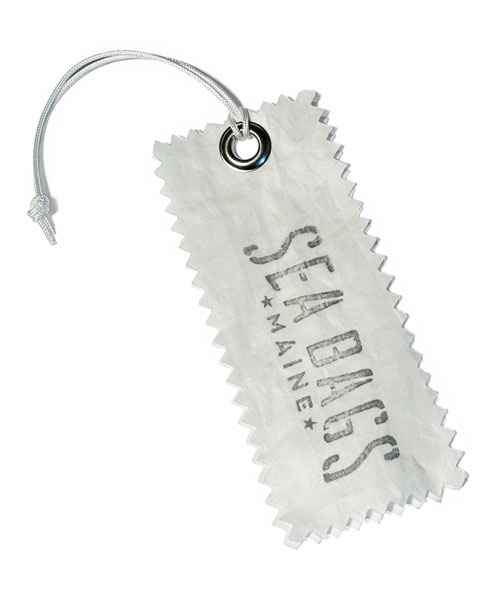
The tiniest scraps—what most would consider unusable—become our signature branded hang tags. These tags are a special part of our products, often saved by customers as keepsakes, repurposed into bookmarks, ornaments, or garden markers.
More than a Store:Our Home for Sustainability & Storytelling
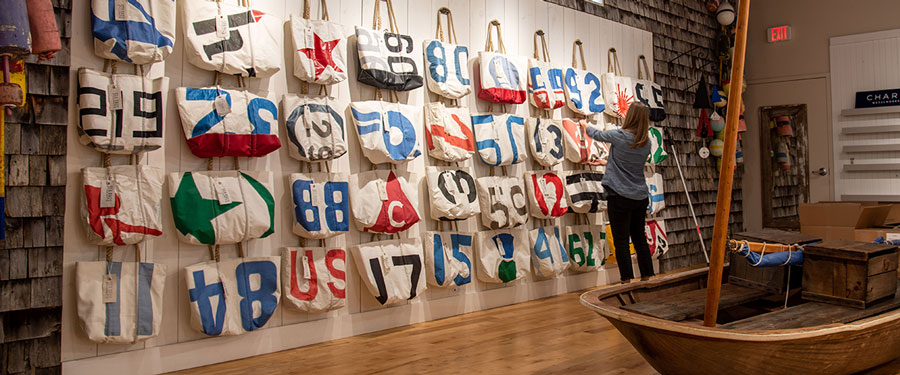
At our Flagship Store in Portland, Maine, we wanted to give visitors a firsthand look at our commitment to sustainability. That's why we transformed our window to showcase the detailed process each sail undergoes to become a Sea Bag. This installation serves as a visual testament to the craftsmanship and effort involved in giving each sail a meaningful second life.
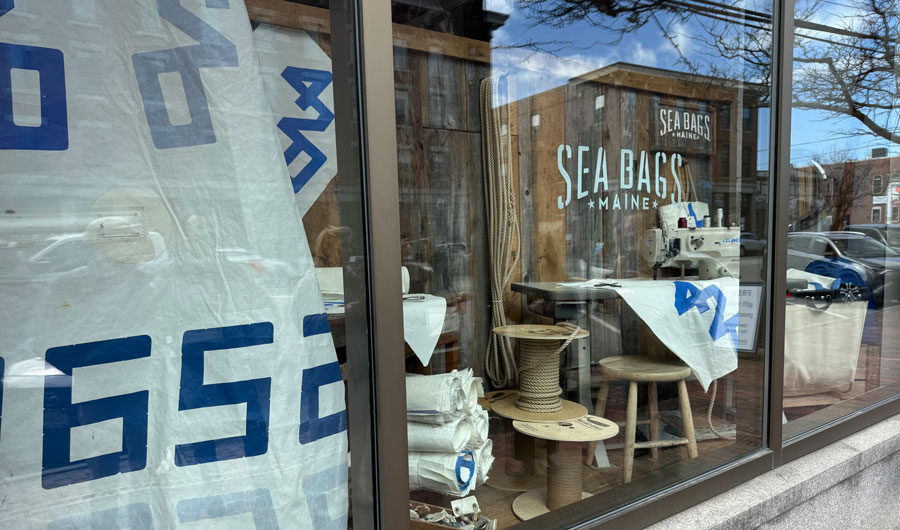
The Challenges of Working with Recycled Materials
Balancing supply and demand presents unique challenges when working exclusively with recycled sailcloth. Over time, our team has perfected the art of pairing different sail types with specific bag designs. Stiff, rigid sails work best for our sturdy buckets, while softer, more pliable sails are ideal for wristlets and other small accessories.
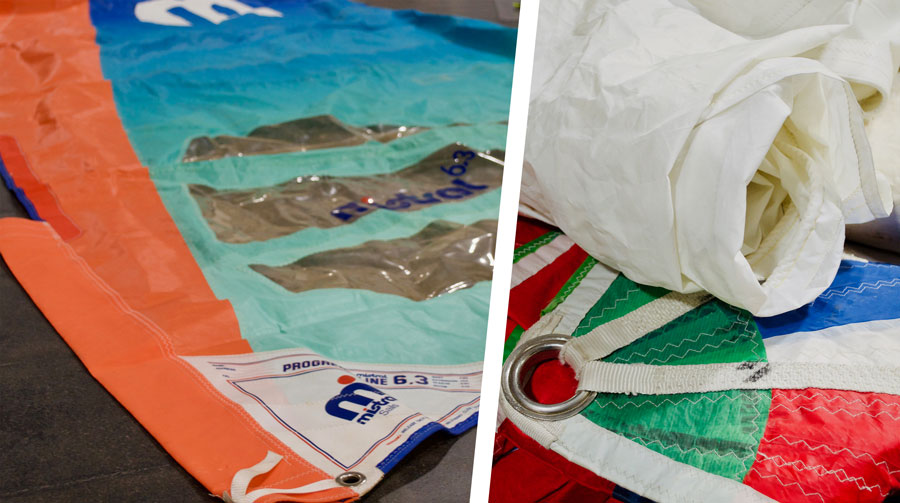
Dillon sheds light on the unpredictability of working with reclaimed materials: "Because our sails are 100% recycled, we never know exactly what we're going to receive. One shipment might be full of stiff sails—great for buckets but not ideal for wine bags or totes. If our orders require a different type of sail, we have to search through our backstock to find the right match."
While purchasing new materials would be easier, Dillon emphasizes, "That's not what we're about. Our mission is to make a positive environmental impact, and that's worth the extra effort."
Why Keeping Sails Out of Landfills Matters
With over 1.5 million pounds of sails diverted from landfills, we take great pride in the impact we're making. But why is this so important?
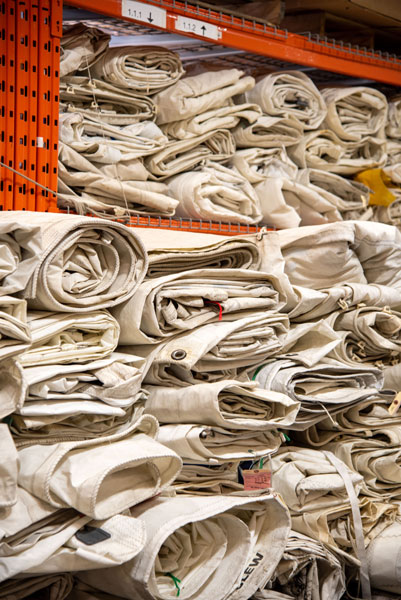
When sails are discarded in landfills, they can take centuries to decompose, contributing to pollution and greenhouse gas emissions. By repurposing these materials, we not only prevent waste but also reduce the demand for new fabric production—saving energy, conserving resources, and minimizing our overall environmental footprint.
If you have sails that are ready for a new life, consider trading them through our Sail Trade Program.
Learn how you can be part of our sustainability mission.
